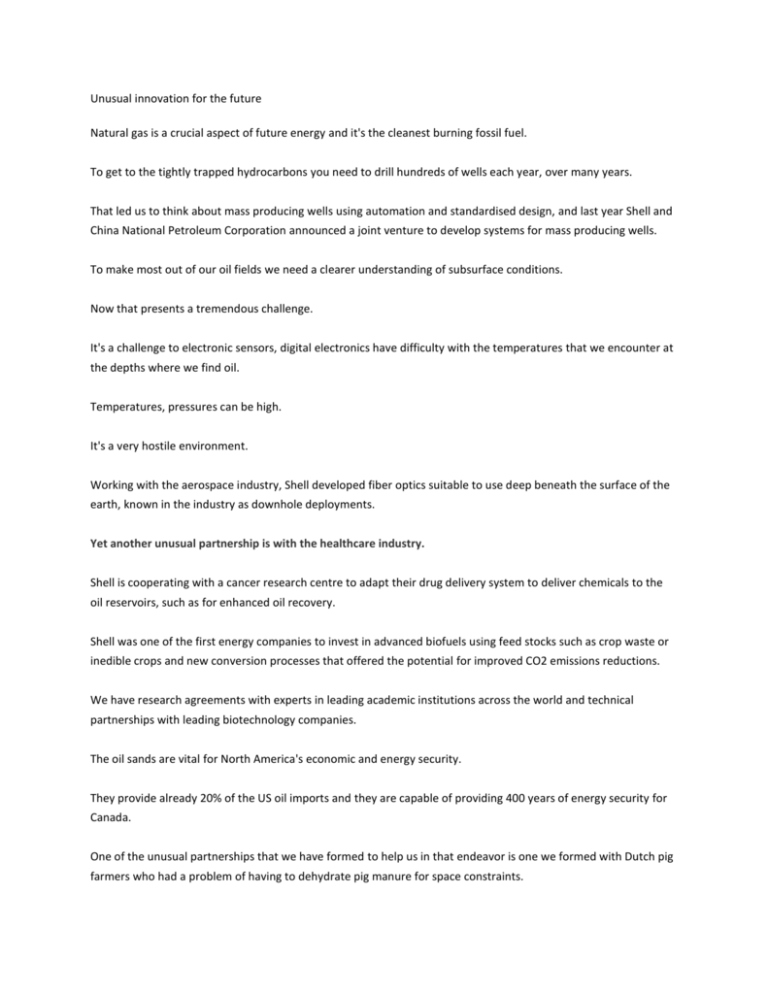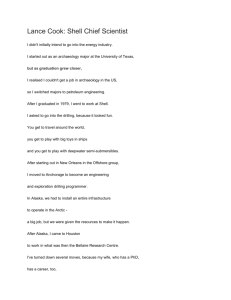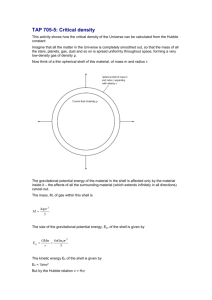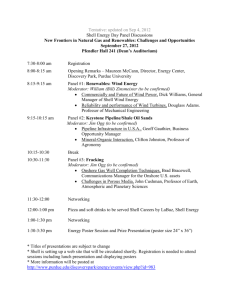Unusual innovation for the future Natural gas is a crucial aspect of
advertisement

Unusual innovation for the future Natural gas is a crucial aspect of future energy and it's the cleanest burning fossil fuel. To get to the tightly trapped hydrocarbons you need to drill hundreds of wells each year, over many years. That led us to think about mass producing wells using automation and standardised design, and last year Shell and China National Petroleum Corporation announced a joint venture to develop systems for mass producing wells. To make most out of our oil fields we need a clearer understanding of subsurface conditions. Now that presents a tremendous challenge. It's a challenge to electronic sensors, digital electronics have difficulty with the temperatures that we encounter at the depths where we find oil. Temperatures, pressures can be high. It's a very hostile environment. Working with the aerospace industry, Shell developed fiber optics suitable to use deep beneath the surface of the earth, known in the industry as downhole deployments. Yet another unusual partnership is with the healthcare industry. Shell is cooperating with a cancer research centre to adapt their drug delivery system to deliver chemicals to the oil reservoirs, such as for enhanced oil recovery. Shell was one of the first energy companies to invest in advanced biofuels using feed stocks such as crop waste or inedible crops and new conversion processes that offered the potential for improved CO2 emissions reductions. We have research agreements with experts in leading academic institutions across the world and technical partnerships with leading biotechnology companies. The oil sands are vital for North America's economic and energy security. They provide already 20% of the US oil imports and they are capable of providing 400 years of energy security for Canada. One of the unusual partnerships that we have formed to help us in that endeavor is one we formed with Dutch pig farmers who had a problem of having to dehydrate pig manure for space constraints. We found that we could adapt that technology to the removal of clay and sand from water in the oil sands and reduce the tailing pond problem that they also had. To meet energy demand and find more oil and gas, we need more data from below the surface of higher quality and at less expense. To achieve this we need to apply new concepts and new technologies from other industries. Shell's also partnering to develop micro electric mechanical system sensoring technology. This technology, originally developed for inkjet printers, is now being adapted as tiny seismic sensors. These tiny seismic sensors, in fact thousands if not millions of them, will allow us to acquire far more data of the subsurface for we would then get a far better image of the subsurface and understand more of the geological conditions in particular that are relevant for oil and gas exploration. Typically in the past Shell has been changing molecules starting from crude oil to make molecules that fit into gasoline or diesel lubricants or household goods like detergents or plastics. However, with the abundancy of natural gas as a clean burn fuel coming more and more available, there is also an increasing interest to change gas molecules into molecules that we currently derive from crude oil. We are now looking for new chemistries to do this more efficiently and one of the processes that we use to do this is called Crowdsource. This is a new experiment for a chemist to try to do a new technique, a new process to see if we can, say, simply tap all the ideas that are out there instead of basically doing it on our own. So we really mobilise the external world and now with unknown partnerships that might be help. Unconventional natural gas has has an important part to play in meeting the future energy challenge. However, producing from those tight rocks involves drilling deep into the subsurface and a process known as hydraulic fracturing Shell is working with civil engineering researchers at MIT using an old technique called the scratch test to give the relative hardness of the minerals. What's unusual about it is it used to be applied on a macro scale and it's now being applied at a micro scale. By understanding which parts of the rock formation are toughest we hope to create better designs for more efficient and safer fracturing treatments. In the past, the hydrocarbons Shell supplied came from easy to reach reservoirs. Surrounding these reservoirs were impermeable zones with less hydrocarbons that were either ignored or used for research purposes. Today, thanks to advances in drilling and production techniques, these formerly ignored unconventional resources are rapidly moving into the production mainstream. These new unconventionals though, they pose unusual challenges for the reservoir engineering discipline because, frankly, they are barely reservoirs in the traditional sense of the word. To improve our understanding of these resources we are partnering with leading universities like the University of Texas, and MIT on collaborative research programmes that involve not only oil and gas production experts but also materials, civil engineering and physics. These programmes seek to understand the behaviour of these unconventional resources by studying them almost down at the molecular level trying to explain and predict the reservoir scale performance. We in Shell, we are the largest fuel retailer in the world so selling fuels and lubricants is an important part of our business. For me, as a chief scientist, and a fan of high end technology, the icing on the cake is motorsport projects for example, being involved in the development of dedicated racing products along with our partnerships with Ferrari, Ducati, or Audi or even Porsche in the past. Motorsport is the toughest testbed. It poses extreme stress to materials and products. The insights and know-how we gain here are directly applied to enhance the quality of our products to the benefit of our customers around the world.






